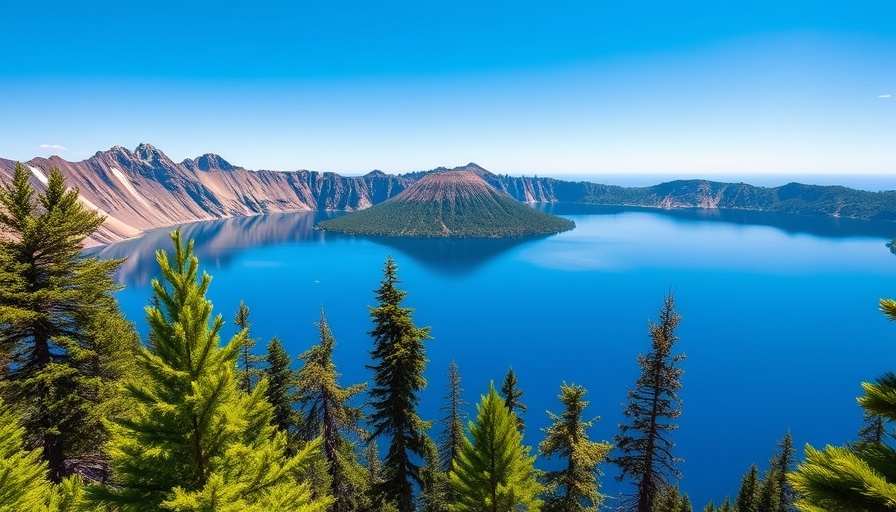
The Enigmatic History of Crater Lake National Park
Known for its stunning beauty and deep blue waters, Crater Lake National Park is a spectacular gem nestled in Oregon's Cascade Mountains. Not only is it the deepest lake in the United States, plunging down to an incredible 1,943 feet, but it is also a product of one of the most massive volcanic eruptions in recorded history. When visitors gaze into its tranquil depths, they might not fully appreciate the ancient volcanic forces that created the lake and its stunning surrounding landscape.
In '115: 5 Fascinating Fun Facts about Crater Lake National Park,' the discussion dives into the park's geological and cultural significance, inspiring us to deep-dive into its history and visitor experience.
How a Dormant Volcano Shaped an Icon
At the heart of Crater Lake lies Mount Mazama, once a towering 12,000-foot volcano that erupted 7,700 years ago in a violent explosion that reshaped the landscape. The eruption was so catastrophic that it left behind a massive crater, which is now filled with rainwater and snowmelt to form the lake we see today.
This monumental event stands as not just a geological marvel but a historical cornerstone, shaping not only the land but also the cultures around it. Native tribes revered the mountain and its stories, viewing it as sacred and carrying the lore of its power through generations. This sense of respect can still be felt today, as some indigenous peoples choose to observe the lake from a distance, honoring its sacredness.
The Unseen Perils: A Sleeping Giant
Interestingly, Mount Mazama is not classified as extinct; it remains one of the 17 most dangerous volcanoes in the United States. While many now stand atop its rim gazing down at the lake, geologists caution about the volcanic activity still simmering beneath. The tectonic plates continue to shift, and the potential for volcanic activity remains a thrilling reminder of nature's raw power.
The Purest Blue: Nature's Masterpiece
Crater Lake’s unforgettable color is a spectacle! Visitors often find it hard to believe that its blue hue exists in nature, appearing more vibrant than the sky itself. This seemingly unearthly color results from the lake's incredible purity and depth, absorbing all colors of light except for blue. With 4.6 trillion gallons of crystal-clear water, Crater Lake showcases the magic of pure H2O—nature’s very own optical illusion.
Experiencing Crater Lake: A Bucket-list Destination
When planning a visit to Crater Lake National Park, knowing its rich history and breathtaking beauty transforms the experience from just another stop on the journey to a truly awe-inspiring adventure. Whether you're hiking along the rim, taking a boat tour to Wizard Island, or simply reveling in the surrounding vistas, understanding the park's origins enhances every moment spent in this strikingly beautiful area. Visitors will find themselves in a space that connects the echoes of ancient earth with the vibrant life thriving today.
Why Knowledge Enhances the Outdoor Experience
For many national park visitors, Crater Lake may simply be a picturesque destination in their travel itinerary. However, learning about its geological history, its cultural significance, and its ongoing natural phenomenon can deepen one’s appreciation for this natural wonder. Making the effort to uncover the national park's stories not only enhances the visit but propels it into an unforgettable memory.
If you're keen to discover more about stunning national parks like Crater Lake, don't miss out on great content! Check out @DirtInMyShoes for insightful tips, fun facts, and information that will inspire your next adventure.
 Add Row
Add Row  Add
Add 




Write A Comment